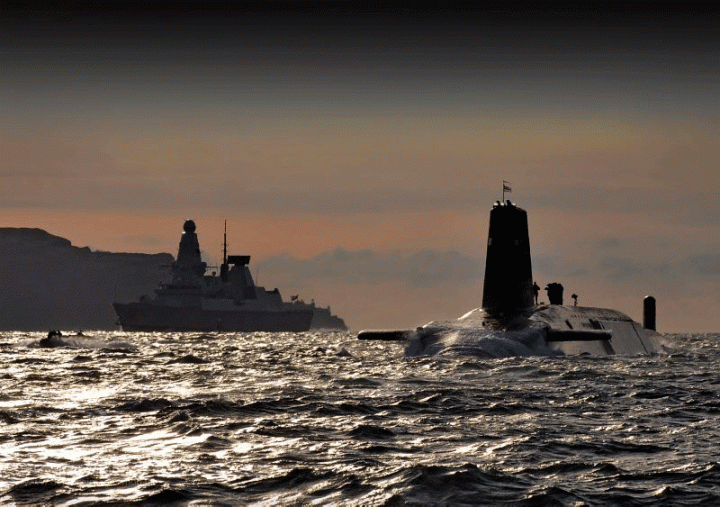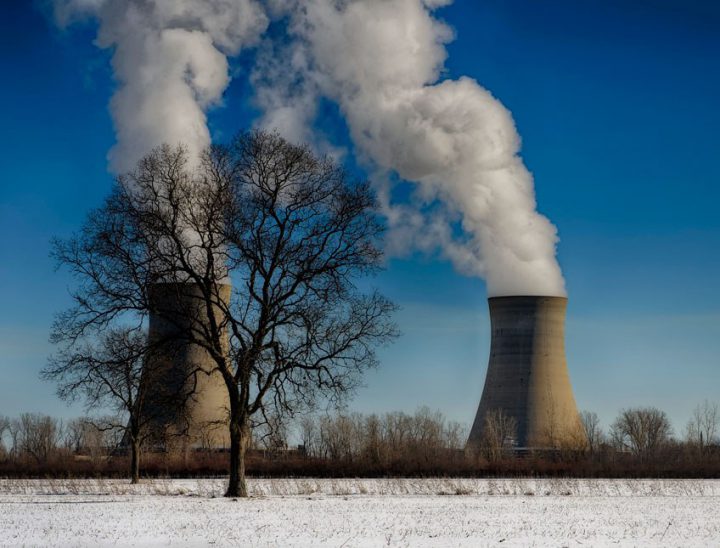Small Modular Nuclear Reactors
What is the UK doing to advance new nuclear technology?

By Richard Black
@_richardblackShare
Last updated:
What are SMRs?
Early nuclear reactors were small by today’s standards. Calder Hall, the world’s first commercial-scale nuclear power station opened in Cumbria in 1956, used 60 megawatt (MW) reactors. Since then, developers have built ever-larger models, with the reactors planned for Hinkley C coming in at 1,650 MW.
This is largely because bigger designs in principle offer economies of scale. However, they also take longer to build, have higher capital costs so are harder to finance, and are arguably becoming too complex. Different conditions at different nuclear sites also reduce the potential to replicate designs, which also adds costs.
SMRs challenge this assumption. The argument is that if nuclear power plants (NPPs) can be mass produced in one location, and then shipped to and assembled at their destinations, the mass production economies of scale will outweigh the advantages that come from building giant bespoke NPPs suited to their unique location. This ultimately means that, in theory, SMRs could be the cheaper option. In theory, also, SMRs offer an easier financing model and more flexibility in deployment and use.
As of 2014, the International Atomic Energy Agency (IAEA) states that there are 45 different SMR designs under development, and four demonstration plants under construction (one in Argentina, two in Russia and one in China). None of these are ‘commercial’, though, and all use different reactor designs. Phase 1 of the UK’s ongoing SMR competition lists 33 different projects.

Small
The ‘S’ in ‘SMR’ refers to the generation capacity. There is no fixed definition of an SMR, but the general consensus suggests that they will be under 300 MW. This is the roughly the capacity of Thanet Wind Farm, which has 100 offshore wind turbines.
Modular
The ‘M’ refers to the fact that the individual parts of the SMR can be factory produced, and then shipped to the end location and assembled there, in the same way as a prefabricated house. This also means that not every part has to be produced in the same factory. Advantages of modularity include the standardisation of components and designs and the potential for mass production and lower costs.
‘Modular’ could also refer to the fact that multiple reactors can be installed sequentially at the same site. This is potentially appealing to developers, as it means a site can start generating an income before it is fully developed, and capacity can be increased over time to match demand.
Advantages of SMRs
SMRs have the following potential advantages when compared with large nuclear stations:
- Lower absolute capital cost, potentially easing the path for investors
- Reduced construction risk via off-site factory production and standardisation of components and systems
- Shorter construction and installation times
- Lower cooling requirements, potentially allowing installation on inland sites
- Reduced investment in the transmission network (as they could be deployed in a more dispersed pattern)
- Easier to decommission
- Design of safety features made easier by smaller reactors, since less heat would need to be dissipated in the case of emergency
- Reduced refuelling needs, with some plants anticipated to operate for 30 years without replenishment of uranium
- In addition to generating electricity, the size of SMRs makes them attractive to more bespoke applications such as water desalination.
Some SMR designs potentially offer significant safety advantages in that they are literally ‘fail-safe’; if all safety processes failed, the reactors would turn themselves off with no potential for release of radioactive substances. However, other designs are close cousins of existing large reactors such as Pressurised Water Reactors (PWRs), and do not have this ‘fail-safe’ characteristic.
Disadvantages of SMRs
The current main disadvantage of SMRs is their lack of development – they do not currently exist as reactors for power generation. As such, it is difficult to have confidence in production times, learning rates and cost reductions proposed by the industry, especially in light of problems faced developing larger reactors.
Nuclear reactors grew bigger because manufacturers and operators gained commercial advantages from increasing size and output. Logically, therefore, SMR economics should overall be worse than those of large reactors. In addition, establishing a fleet of smaller, dispersed nuclear installations would presumably provoke more problems with public acceptance and incur a greater cost for security.

Would SMRs benefit the UK?
It is highly unlikely that SMRs could be in operation in the UK before 2025 at the very earliest. By then, the electricity system is likely to look very different; increasingly based on ever-cheaper wind generation, with storage, electric cars, demand-side measures, interconnection and other flexible technologies. It is not clear where SMRs would fit into this picture – although arguably, in purely technical terms, they would fit into a decentralised electricity system better than existing large reactors.
Rolls Royce is the leading UK light on SMRs, and forecasts that – providing extensive takeup of the technology – the industry could create up to 40,000 skilled jobs and add £100 billion to the value of the UK economy. This claim has been questioned, however.
Bringing SMRs to market will require a number of decisions by Government. Firstly, the competition to bring down costs would need to convince decision-makers that SMRs were economically competitive with renewables (including ‘firming costs’), and that they could be delivered on time. Secondly, a decision would need to be made on the Regulated Asset Base funding method, which many in the industry see is pivotal for bringing costs down. This decision is expected in the 2020 Energy White Paper.
What are other countries doing?
Alongside the UK, 9 countries - Argentina, China, France, India, Japan, South Korea, South Africa, Russia and the US - are investing time and money into SMR research and development.
In a similar style competition to the UK competition, the US Department of Energy allocated $452m to support the development of an SMR, based on light water technology.
